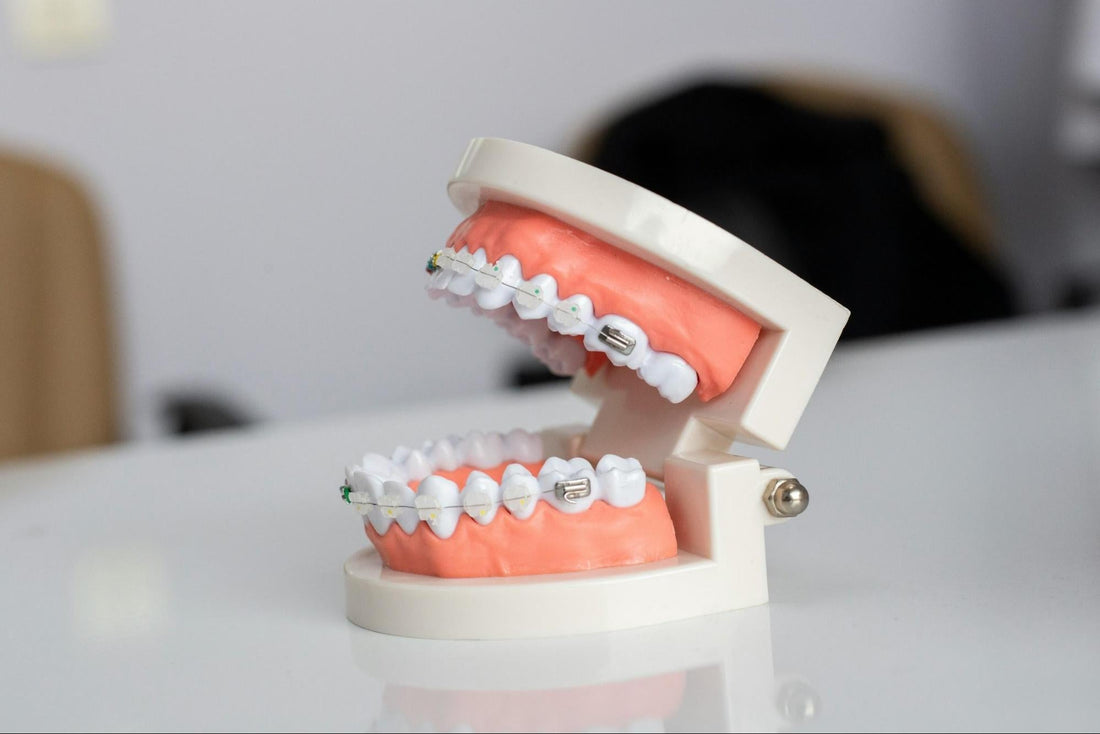Composite Bonding: Composite veneers vs Edge Bonding

If you need your teeth repaired, your dentist may suggest composite bonding.
But, with multiple types on the market, how do you make the right choice for you?
Our expert, Dr Sanjay Patel, covers the two main types of bonding — those being composite veneers and edge bonding — and breaks down all the differences so you know what you’re getting yourself into with your next treatment.
What is composite bonding?
Composite bonding is a cosmetic procedure designed to improve the look of your teeth.
It’s typically done by applying a tooth-coloured resin to fill in or smooth over any imperfections, like fixing breaks, filling gaps, tackling discolouration, and smoothing over uneven tooth edges.
It's a non-invasive and cost-effective way to fix minor and major imperfections.
The process
The process of composite bonding is typically as follows:
· Consultation – Your dentist assesses your teeth and discusses your desired results.
· Preparation – Minimal or no enamel removal is required, making the process painless.
· Application – A tooth-coloured composite resin is applied to the tooth surface.
· Shaping – The resin is sculpted to achieve the desired shape and size.
· Curing – A special light hardens the resin, bonding it securely to the tooth.
· Polishing – The bonded area is smoothed and polished to blend seamlessly with natural teeth.
What is edge bonding?
Edge bonding is a specific type of composite bonding that focuses more on repairing the edges of teeth, rather than fixing a whole tooth or set of teeth.
It’s commonly only used for minor adjustments, like fixing chipped or worn-down front teeth and improving symmetry, but it can also be used to fix weakened or fractured teeth in some cases.
The process
The process of edge bonding is usually as follows:
· Assessment – The dentist examines the worn or uneven edges of your teeth.
· Resin Application – A thin layer of composite resin is added to restore the natural tooth shape.
· Sculpting and Curing – The resin is shaped and then hardened with a curing light.
· Finishing Touches – The bonded edges are polished for a natural appearance.
What are composite veneers?
Composite veneers are a slightly different type of cosmetic dental treatment.
They’re a type of cosmetic bonding that involves applying a tooth-coloured resin to the front surface of the teeth to improve their appearance.
Unlike porcelain veneers, which are custom-made outside of the dentist's office in time for your appointment and then bonded to the teeth, composite veneers are sculpted directly onto the tooth by the dentist during your appointment.
Like other types of composite bonding, they fix issues like discolouration, minor gaps, small chips, or uneven tooth shapes, offering a more affordable and less invasive alternative to porcelain veneers.
The process
The process of applying composite veneers is as follows:
· Consultation and Planning – Your dentist assesses your teeth and discusses your goals to determine whether composite veneers are right for you.
· Tooth Preparation – In most cases, minimal or no enamel is removed. The surface is cleaned and roughened slightly to help the resin adhere.
· Resin Application – A tooth-coloured composite resin is carefully layered onto the front surface of the tooth.
· Shaping and Curing – The resin is sculpted into the desired shape, then hardened using a special curing light.
· Polishing – Once the resin is set, they are polished to match the natural shine of your teeth.
What are the differences?
Although they may seem very similar, as they’re both designed to tackle misshapen, misaligned and chipped teeth, there are differences in how they’re done, how and when each one is applied and the cost of each treatment.
Read on to get a feel for the differences.
Application Area
Composite veneers are a versatile treatment that involves applying resin to the entire surface of a tooth, or just the edges, to address both major and minor dental issues. This makes it better suited for patients looking for more noticeable smile enhancements.
On the other hand, edge bonding is a more targeted treatment that focuses solely on the edges of the teeth. It is commonly used to restore worn, chipped, or uneven edges, particularly in the front teeth. Since edge bonding is limited to specific areas and damage, usually at the edges of the teeth that get worn away, it’s a more subtle approach to cosmetic enhancement.
Purpose
Think of it like this: composite veneers are typically used for widespread fixes on all the teeth. As well, they’re often used purely for cosmetic purposes, because of their ability to change the entire look and shape of a tooth or teeth.
Edge bonding is a more targeted approach for wear and tear on the edges.
Composite veneers can be used to reshape teeth, close small gaps between teeth, cover discolouration, or correct minor misalignments. They can basically improve the shape, size, and colour of the teeth in one go.
Alternatively, edge bonding serves a more focused purpose. Rather than altering the entire tooth, edge bonding restores the natural smoothness of the tooth, undoing any wear and helping to improve symmetry while maintaining a natural-looking smile.
Both are commonly used cosmetically, but composite veneers are typically used more for complete smile transformations, whereas edge bonding is typically used for smaller fixes.
Amount of Material Used
Since composite veneers can be used to treat the entire tooth surface, more materials — in this case, composite resin — can be used depending on the amount of treatment that the patient wants or needs.
Edge bonding, on the other hand, is a more conservative approach that uses only a small amount of material — in this case, adhesive — to repair and smooth any jagged edges on the teeth.
Because edge bonding focuses on minimal enhancements, the amount of material applied is significantly less on average than composite veneers.
Cost
Composite veneers typically cost more than edge bonding.
Because it’s a more time-intensive process, uses more materials, requires more skill, and is a more comprehensive treatment.
Composite Veneers vs Edge Bonding: Pros and Cons
Each method has its pros and cons — depending on your personal preferences, you may want to choose one over the other.
Here, we break down the pros and cons of each:
Composite Veneers: Pros and Cons
|
Pros |
Cons |
|
More transformative – Great for reshaping teeth, closing gaps, and covering discolouration. |
More expensive – Costs more due to full-tooth coverage and shaping. |
|
Natural-looking – Blends well with surrounding teeth for a seamless finish. |
Takes longer – Application and sculpting take more time than edge bonding. |
|
Minimally invasive – Usually no drilling or enamel removal needed. |
Can stain – Composite resin may discolour over time. |
|
Long-lasting – Can last 3–7 years with proper care. |
Edge Bonding: Pros and Cons
|
Pros |
Cons |
|
Affordable option – Typically costs less than full composite bonding. |
Limited scope – Only fixes the edges of the teeth and doesn’t address discolouration, gaps, or major reshaping. |
|
Quick and simple procedure – Requires less material and time, making it a great option for minor fixes. |
May not last as long – Edge bonding is slightly more prone to wear and may need touch-ups within 3-5 years. |
|
Preserves more of the natural tooth – No need to modify the entire surface. |
Less impact on overall smile – While it refines the edges, it doesn’t provide the dramatic results that full composite bonding can achieve. |
|
Great for subtle improvements – Ideal for minor chips and worn edges without altering the whole tooth. |
Brighten Your Smile with Enlighten’s Treatment Today!
If you’re not quite looking for a complete overhaul, but want your teeth whiter, our experts at Enlighten know how to whiten smiles. It’s in our DNA. That’s why our gentle, non-invasive whitening treatment is designed to whiten your teeth while maintaining their natural health.
Want to know more? Stay on top of all the latest developments on our blog.
Book an appointment with one of our certified dentists for a professional whitening experience that enhances your smile safely and effectively.
FAQs
1. How fast is bonding?
Both composite and edge bonding are quite fast procedures for a couple of teeth, so you shouldn’t be waiting too long to enjoy them. However, lots of teeth need treatment, the time can vary.
On average, composite bonding takes longer, around 30-60 minutes per tooth. Whereas edge bonding takes around 20-45 minutes per tooth.
2. Does bonding hurt?
No, bonding is generally painless.
Since it doesn’t require drilling or removing enamel, there’s no need for anaesthesia — unless the bonding is being used to fill a cavity.
3. How do I know which bonding type is right for me?
Ultimately, it’s up to your personal preference.
If you feel you only need minor edge repairs, edge bonding is a great option. Alternatively, if you want a more significant smile transformation, composite bonding is better.
A consultation with a dentist will help determine the best choice based on your needs.






